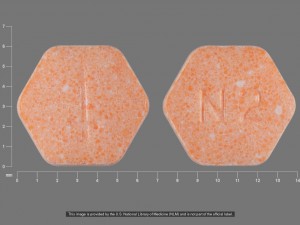ARTICLE OVERVIEW: Buprenorphine has an average half-life from 24 – 60 hours and naloxone’s half-life ranges from 2 – 12 hours. The relatively long half-life of buprenorphine has been designed to help treat and manage opiate withdrawal symptoms, by maintaining opioid partial agonist levels in the brain. Still, buprenorphine can be detected in your urine for up to 3 days after one single dose, and possibly days later if you are using Suboxone in high doses over time. More on detection times and Suboxone’s effects here.
TABLE OF CONTENTS
- What Is Suboxone?
- Taking Suboxone
- Peak Levels And Half-Life
- Blood, Hair, And Urine Sample Tests
- Safety
- Suboxone Side Effects
- Who Use Suboxone?
- Do Suboxone Cause Dependence?
- Signs Of A Problem
What Is Suboxone?
Suboxone is the brand name of a medicine that is a combination of buprenorphine and naloxone. It is used in medication-assisted treatment to help people reduce or quit their use of heroin or other opiates, such as pain relievers like morphine.
The active ingredients in Suboxone are buprenorphine and naloxone. The two work together to lower cravings for stronger drugs while simultaneously blocking the action of opiates or opioids. In fact, buprenorphine has unique pharmacological properties that help:
- Diminish the effects of physical dependency to opioids, such as withdrawal symptoms and cravings.
- Increase safety in cases of overdose.
- Lower the potential for misuse.
Because buprenorphine is an opioid partial agonist, it produces effects such as euphoria or respiratory depression. However, these effects are weaker than those of full strength opiate drugs such as heroin, codeine, or fentanyl.
Taking Suboxone
Suboxone is mainly administered as a sublingual medication in either film or tablet form which dissolves under the tongue, although many people favor the film for its taste.
Suboxone is meant to be taken as a single daily dose. The recommended daily dose for Suboxone maintenance is 16/4 mg (ratio of buprenorphine to naloxone), although dosage can be progressively increased to a level that supports treatment and suppresses opioid withdrawal signs and symptoms Maximum recommended daily dosage of Suboxone is 24/6 mg.
Buprenorphine’s opioid effects increase with each dose until at moderate doses they level off, even with further dose increases. This “ceiling effect” lowers the risk of misuse, dependency, and side effects. In addition, because of buprenorphine’s long-acting agent, many persons may not have to take it every day.
National Library of Medicine images how Suboxone looks here [1]:
Peak Levels And Half-Life
The half-life of any drug, medication or substance is the period of time necessary for half the drug to be eliminated or disintegrated by natural processes in the body. Because Suboxone contains two active ingredients, the half-lives for buprenorphine and naloxone are different and should be considered separate chemicals.
Based on studies performed with Suboxone, buprenorphine has an average half-life from 24 – 60 hours and naloxone half-life ranges from 2 – 12 hours. The relatively long half-life of buprenorphine has been designed to help treat and manage opiate withdrawal symptoms, by maintaining opioid partial agonist levels in the brain.
During clinical trials, the onset of buprenorphine effects appear quite rapidly, with most doses nearing peak effect after 90-100 minutes. Still, a mass balance study of buprenorphine showed complete recovery of radiolabel in urine (30%) and feces (69%) collected up to 11 days after dosing.
Blood, Hair, And Urine Sample Tests
Drug testing is frequently a mandatory part of Suboxone maintenance treatment, or could be ordered by your school or work. Most drug tests during Suboxone treatment are looking for other drugs of use. However, in general, detection of a drug depends on BOTH usage factors and characteristics of the specific drug.
- Dose.
- Frequency of use.
- Time since last use.
After a single dose of Suboxone (buprenorphine) in healthy adults, the average detection time for this drug was 9 hours with cloned enzyme donor immunoassay (CEDIA) and 76 hours with liquid chromatography-tandem mass spectrometry (LC-MS-MS).
Currently, no precise test is commercially sold to measure the buprenorphine levels in Suboxone, although buprenorphine can be detected in urine, blood, or hair by gas chromatography/mass spectrometry (GC/MS) and by enzyme-linked immunosorbent assay in urine. Specific urine based tests are ordered for Suboxone testing and include cloned enzyme donor immunoassay (CEDIA) or liquid chromatography-tandem mass spectrometry (LC-MS-MS) tests. In addition, oral fluid can also be used to monitor the use of this opioid.
Safety
Significant respiratory depression has been associated with buprenorphine, particularly when administered intravenously. A number of deaths have occurred when people have intravenously misused buprenorphine, usually taking it with benzodiazepines at the same time. Deaths have also been reported in association with concomitant administration of buprenorphine and other depressants such as alcohol or other opioids.
This is why the following should be taken into account if you are starting treatment with Suboxone:
- A serious overdose might occur if benzodiazepines, sedatives, tranquilizers, antidepressants, or alcohol are taken at the same time as Suboxone.
- Suboxone may impair the mental or physical abilities required for the performance of potentially dangerous tasks such as driving a car or operating machinery.
- People should consult their physician if other prescription medications are currently being used or are prescribed for future use.
- Persons should inform their family members that, in the event of emergency, the treating physician or emergency room staff should be informed that the person is physically dependent on opioids and that the person is being treated with Suboxone.
- People who misuse, abuse, or divert buprenorphine products or other opioids should be provided with, or referred to, more intensive and structured treatment under medical supervision.
Suboxone Side Effects
The most common adverse events reported in clinical trials with Suboxone were:
- Anxiety.
- Asthenia.
- Constipation.
- Depression.
- Headache.
- Infection.
- Insomnia.
- Nausea.
- Pain (abdominal pain, back pain).
- Rhinitis.
- Sweating.
- Withdrawal syndrome.
Perhaps the most serious side effect of Suboxone and similar drugs is the potential for abuse and addiction, which can in time lead to severe health effects and overdose.
Does Suboxone Cause Dependence?
Yes, Suboxone causes physical dependence.
Regular, daily administration of Suboxone produces dependence of the opiate type, characterized by withdrawal upon abrupt discontinuation or rapid taper. The withdrawal syndrome is milder than seen with full agonists, and may be delayed in onset.
Because it contains naloxone, Suboxone is highly likely to produce marked and intense withdrawal symptoms if misused parenterally by persons dependent on opioid agonists such as heroin, morphine, or methadone. Sublingually, Suboxone may cause opioid withdrawal symptoms in such persons if administered before the agonist effects of the opioid have subsided.
Signs Of A Drug Problem
As with all drugs of abuse, the likelihood that you can become addicted to Suboxone is related to how you take it and how fast you experience desired results. If you are using Suboxone without a prescription or have been previously addicted to opiates, the risk of addiction increases, and clearly these are signs of a problem. Some of the main signs of a drug problem with Suboxone include:
- Doctor shopping for more Suboxone.
- Losing control over dosage amounts and frequency.
- Taking Suboxone to get high.
Because of buprenorphine’s opioid effects, it can be misused, particularly by people who do not have an opioid dependency. Still, it’s difficult to get high on Suboxone. Naloxone is added to buprenorphine to decrease the likelihood of diversion and misuse of the combination drug product. When these products are taken as sublingual tablets, buprenorphine’s opioid effects dominate and naloxone blocks opioid withdrawals. If the sublingual tablets are crushed and injected, however, the naloxone effect dominates and can bring on opioid withdrawals.
Overdose Signs
It is very hard to overdose on this particular drug; however it is possible. This can cause extreme and widespread depression of a number of physiological processes, including slowed breathing and heart rate, coma and even death.
Seek immediate medical treatment and CALL 911 if you or someone you know experience the following symptoms [2]:
- Intermittent loss of consciousness.
- Lack of coordination.
- Profound drowsiness.
- Slowed breathing.
- Sluggish reflexes.
- Slurred speech.
- Vision problems.
Who Use Suboxone?
In United States, buprenorphine has gained popularity as a drug of abuse. It is sought by a wide variety of narcotic abusers: young persons, non-addicted opioid abusers, heroin addicts and buprenorphine treatment clients. So, what do some of the statistics reveal?
The National Survey on Drug Use and Health (NSDUH) reported that an estimated of 712,000 persons or 0.3 percent of people aged 12 or older misused buprenorphine products in 2016. What’s more, while the increase of people who misuse Suboxone is on the rise, so are deaths and overdose. [3]
According to the Drug Abuse Warning Network (DAWN ED), an estimated 21,483 emergency department visits were associated with nonmedical use of buprenorphine in 2011, nearly five times the 4,440 estimated number of buprenorphine visits in 2006. [4] The American Association of Poison Control Centers Annual Report indicates that U.S. poison centers recorded 3,625 case mentions and three deaths involving toxic exposure from buprenorphine in 2011. In 2014, the same organization reported 2,137 single exposures. [5]
Recent increases in the incidence of opioid abuse and dependence as well as increases in the number of person’s individual providers may treat lead to continued increases in Suboxone exposure.
So, if you think you have a problem…you are not alone!
Please reach out for help.
Problems With Suboxone?
If you think that you have a problem with Suboxone, you probably do. However, help is available. Please write us here with your questions or comments or need for help. We will try to respond to you personally and promptly. Or, give us a call. The hotline number is listed above.












Related Posts